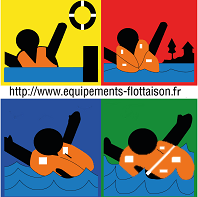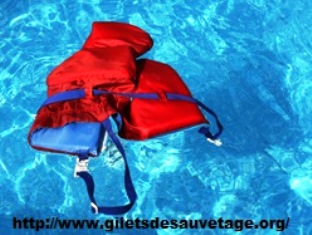BAMBI was a research project involving a multi- disciplinary team from five different countries and seven organisations, project managed by Sue Coleshaw and funded by the European Commission.
The aim was to investigate the problems involved in using children, infants and babies as test subjects for the type- evaluation of lifejackets and other personal flotation devices (PDF). Problems had been been identified when evaluating products against the health and safety objectives of the Personal Protective Equipment (PPE) Directive. The ethics of using children to perform water performance tests had also been questioned. It was considered that marine manikins could be used to improve the objective testing of buoyancy equipment, increasing the safety of testing and reducing the need to use children as test subjects.
 A questionnaire sent to European test houses involved in the assessment of children’s lifejackets identified that children aged 6 to 9 years were most commonly used for testing. Manikins to represent children aged 1 to 2 years were considered to be the most important. Incidence of drowning was also found to be highest in the infant and small child age groups.
A questionnaire sent to European test houses involved in the assessment of children’s lifejackets identified that children aged 6 to 9 years were most commonly used for testing. Manikins to represent children aged 1 to 2 years were considered to be the most important. Incidence of drowning was also found to be highest in the infant and small child age groups.

New test procedures were then written for use with the manikins. Emphasis was placed on objective measures. Intercomparison trials were undertaken to validate the manikins. Highly reproducible results were found, with a low level of uncertainty. It was shown to be possible to separate lifejackets of good and bad design. Problems with the performance of some child lifejackets were also found as a result of carrying out rigorous tests with the manikins. It was concluded that manikin testing could lead to improvements in the design of child lifejackets.

Publications
COLESHAW SRK, HERRMANN R, LINDQUIST A, PLATTEN G (2001) Development and Validation of Test Procedures and Test Tools for Children’s, Infants’ and Babies’ Lifejackets, Buoyancy and Swimming Aids. Final Report submitted to European Commission, DG XII; Standards Measurement and Testing Programme 4, Project CT98-2218.
COLESHAW SRK (2001) Improving safety and performance of children’s lifejackets. 20th Leith International Conference, Aberdeen, 1 November 2001.
COLESHAW S, HERRMANN R, LINDQUIST A, PLATTEN G (2000) Development of test methods and tools to improve the safety and performance of children’s lifejackets. In: J Werner and M Hexamer, eds. Environmental Ergonomics IX. Aachen, Shaker Verlag.




